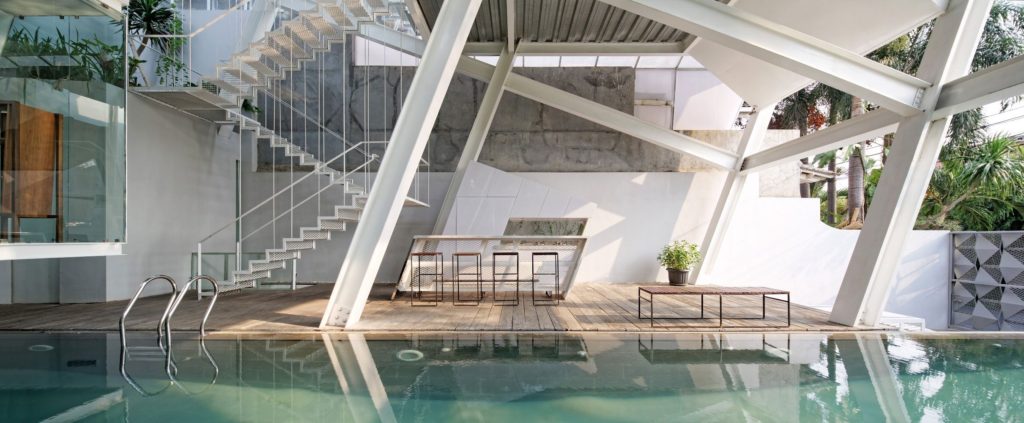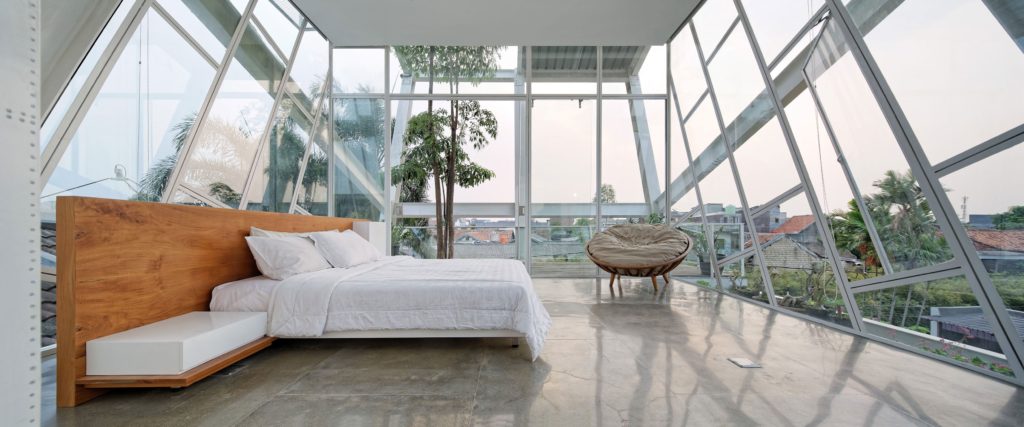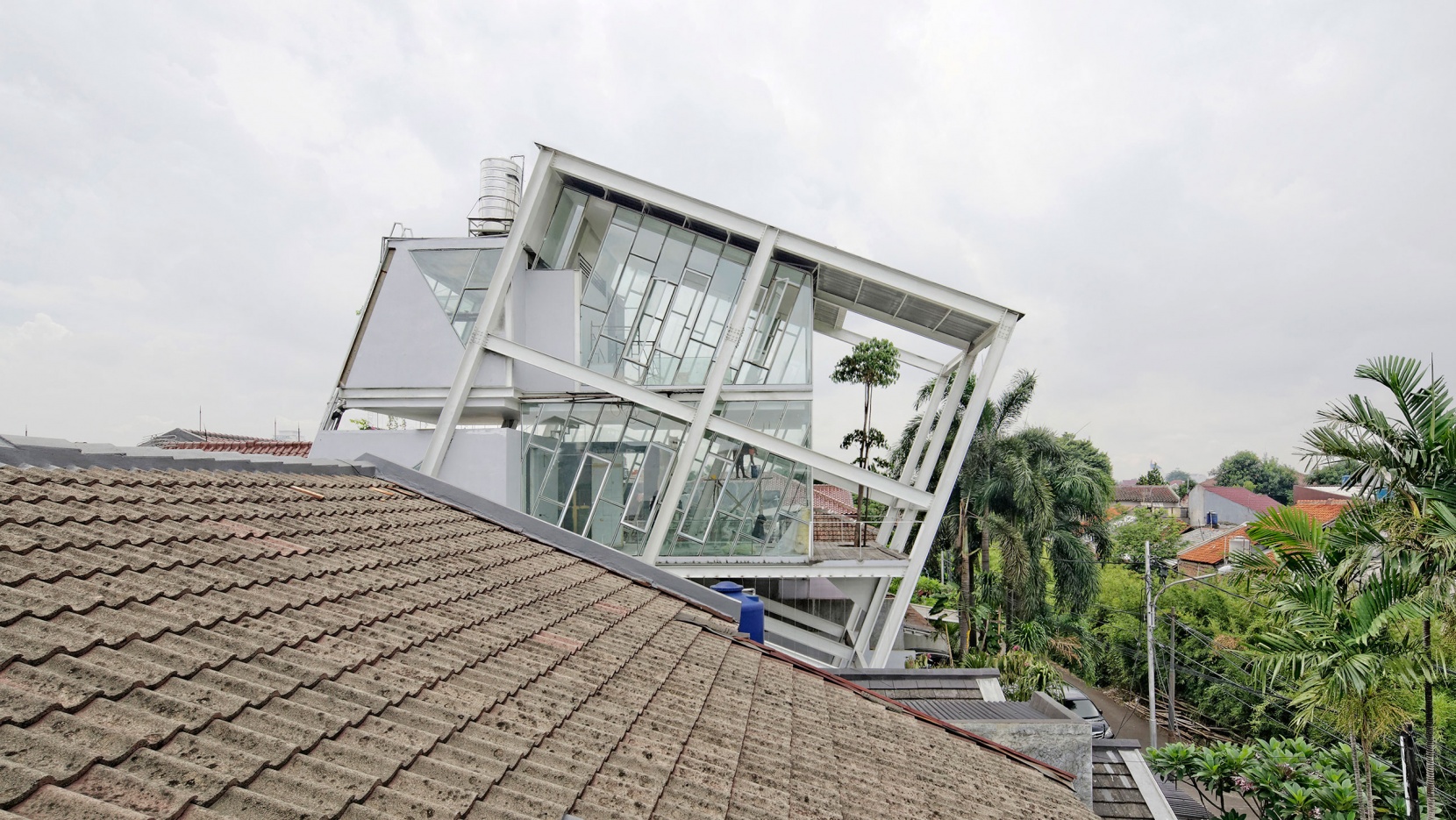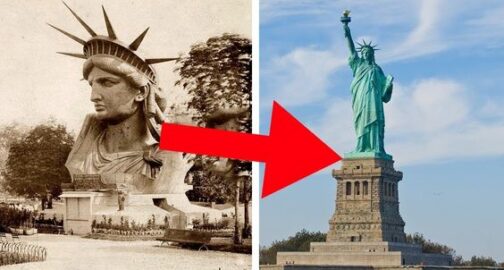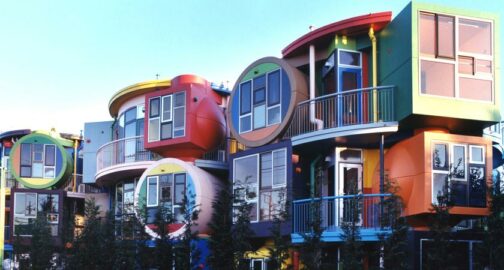
With shows like The World’s Most Extraordinary Homes on Netflix and an increasing amount of jaw-dropping structures resembling art popping up on Instagram, one can argue that creative architecture and interior design are having a moment. With technological advancements and so many careers shifting to become more lifestyle oriented, allowing time to appreciate the arts, designs have become increasingly innovative year after year. Here are some of the most unique hotels, living quarters, and exhibits that you’ve likely not seen, even amid all your worldly friends’ photos on social media.
Qatar Faculty of Islamic Studies: Ar-Rayyan, Qatar (Education City)
A center for Islamic learning and thinking, this building is both a five story university and a mosque. Located on the Education City campus (which houses a coed assembly of universities), the Qatar Faculty of Islamic Studies serves as a dialogue between Islamic faith and education in the complex context of the modern world. In the Islamic practice, one reaches enlightenment through seeking knowledge, so the religious and educational spaces make sense together here. This building has its prayer spaces (which are open to the public) and educational spaces literally wrapped around each other as an architectural metaphor. Opened in 2015, the Qatar Faculty of Islamic Studies is the recent work of lead designer Ada Yvars, the co-founder of Mangera Yvars.
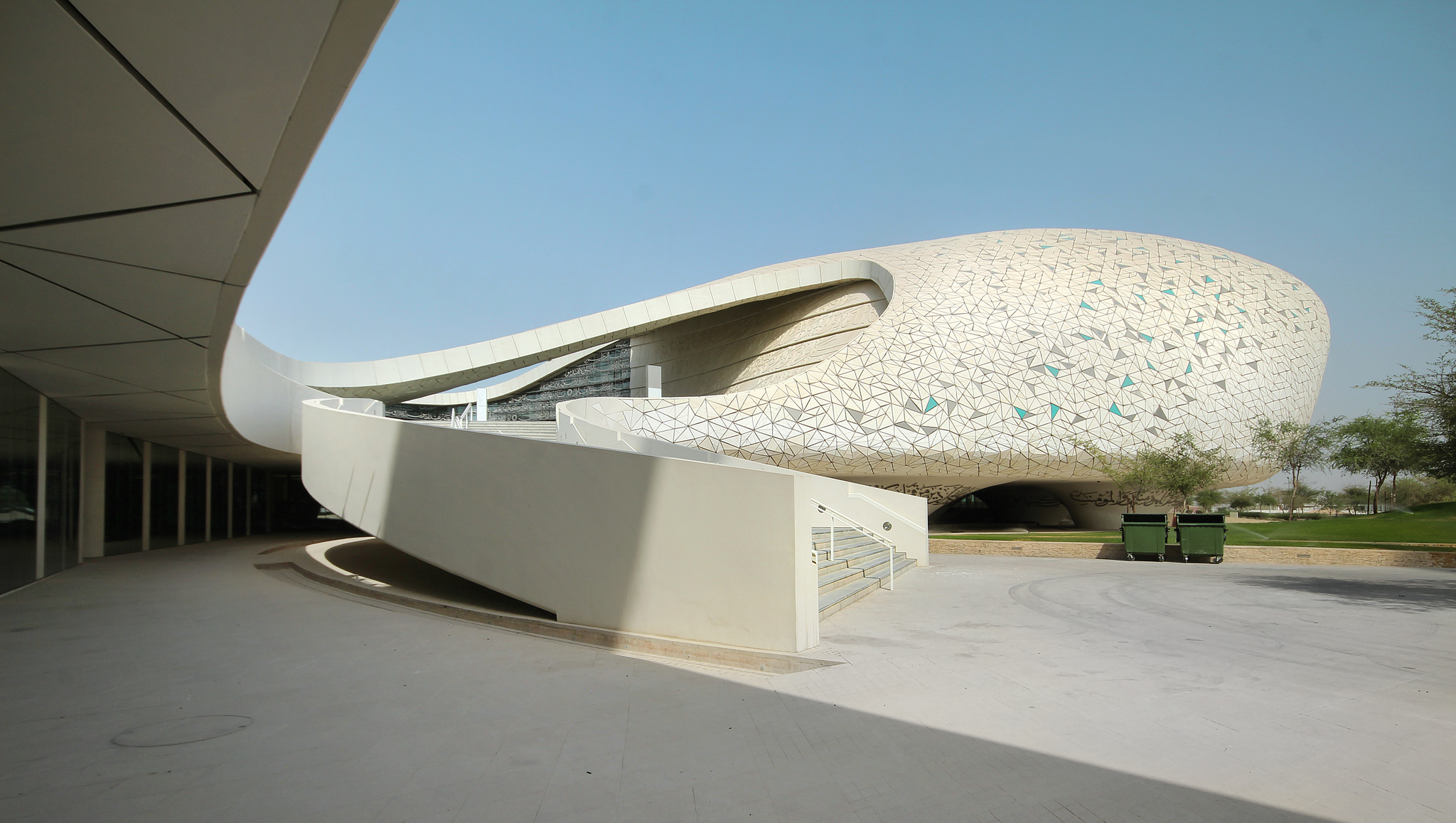
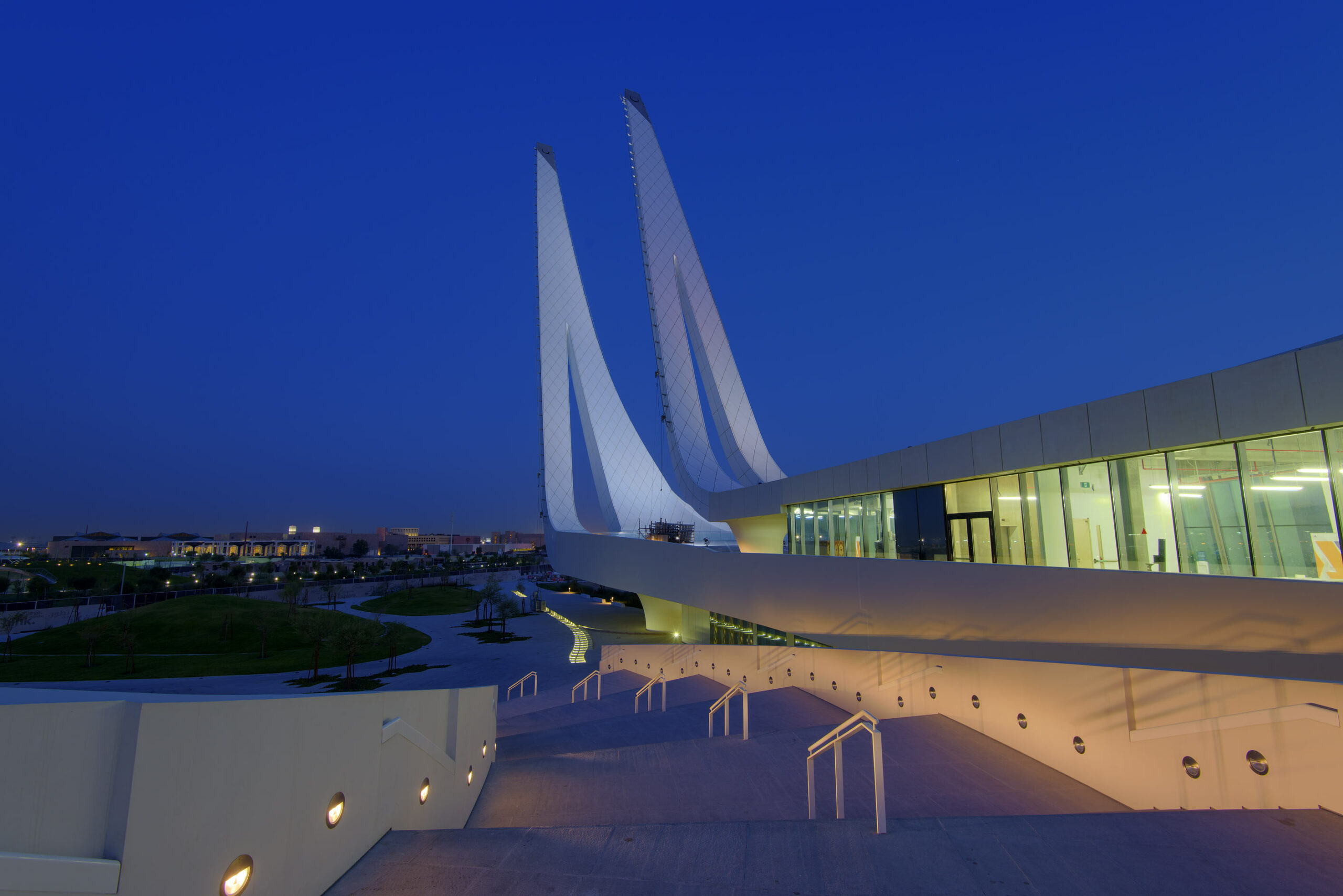
Sedlec Ossuary: Kunta Hora, Czech Republic
If you love moody photoshoots, graveyards, and all things spooky, the Sedlec Ossuary will be right up your alley. Decorated by 40,000 human skeletons (yep, you read that right) it’s also known as the Church of Bones. From a chandelier made of every bone in the human body, to a coat of arms made out of, you guessed it, bones, the Ossuary might sound a little eerie. However, most visitors report finding the experience surprisingly peaceful. Oh, you’re probably wondering where all these bones came from. Right. Perhaps that peaceful feeling visitors report makes sense because people were thrilled to have their bones in here back in the day. At some point in the 1200s, the King of Bohemia went to Jerusalem and brought back a jar of holy soil to Sedlec. This was a huge deal: People from all over wanted to be buried with his holy soil, so many people in fact, that they had to expand the cemetery in Sedlec where the King put the soil in the first place. Then, in the 1600s, a Gothic church was built next to the cemetery and the basement was used as an ossuary. Over two-hundred years later, a woodcarver by the name of Frantisek Rint was appointed to put all of those bones in order, and the Bone Church was the result. If you find yourself in Prague, Sedlec Ossuary is only an hour away in Kunta Hora. So it makes a nice day trip… or even better, Halloween night trip? Lastly, it took everything I had not to use the words “breathtaking” or “to die for,” so feel free to take those as Instagram captions if you wish.
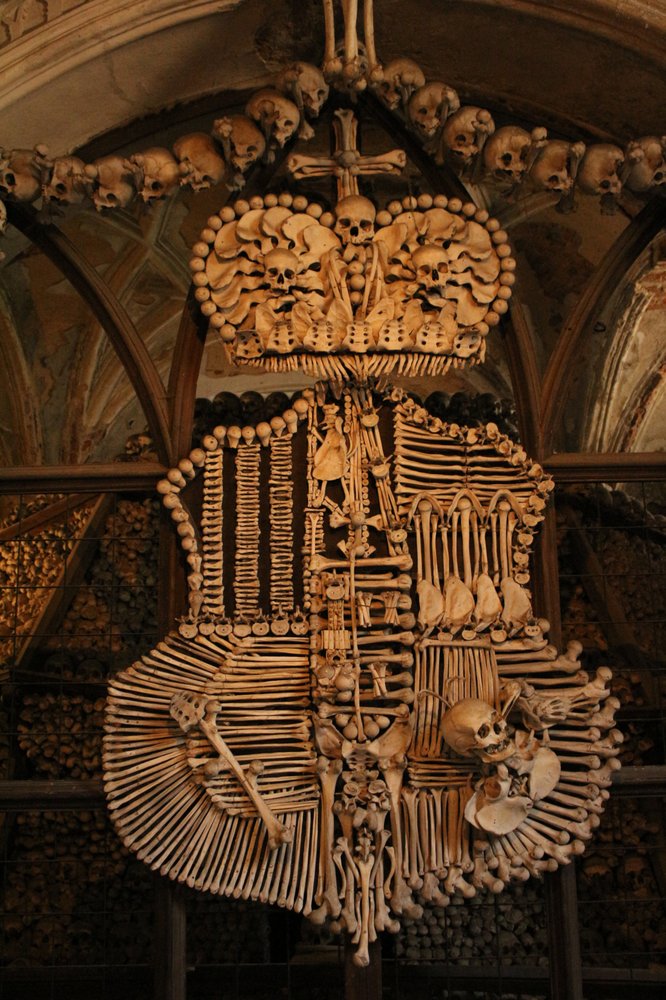
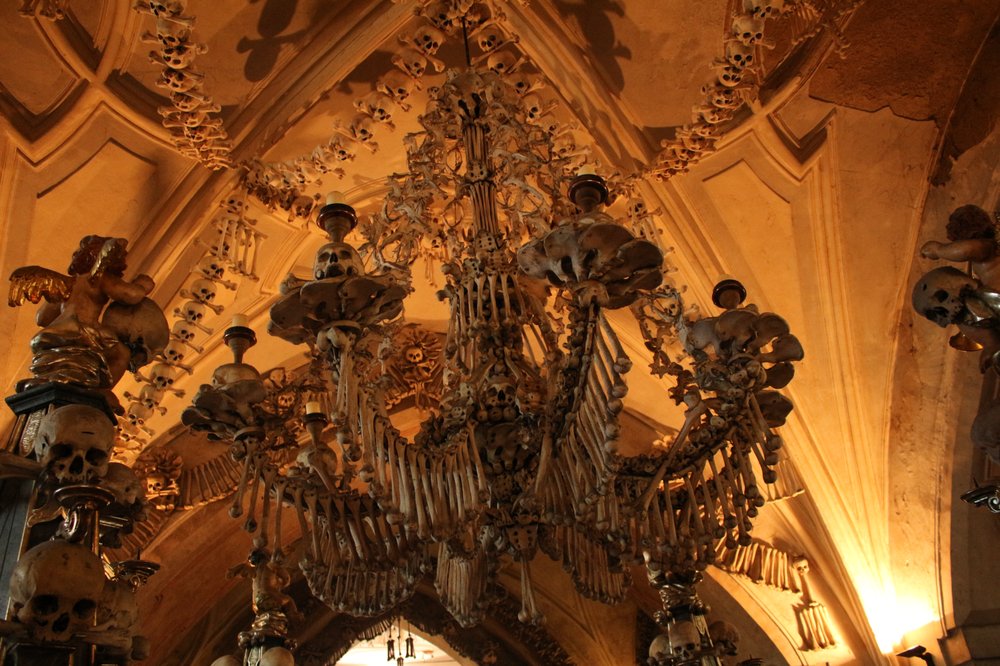
Geisel Library: San Diego, California
Designed in the 1960s by architect William Pereira, this library on University of California San Diego’s campus was actually named after Theodor Geisel, aka Dr. Seuss. He and his wife Audrey were big donors to the school and, clearly, big time lovers of the written word. That must make the students reading statistics textbooks in there feel a little more whimsical, right? And speaking of whimsy, this is one of the few college libraries that still has real bells rather than a recording chiming on the top floor to mark the hour. The university even has a live person playing concerts on the bells at noon, and he takes song requests.
The six story stepped tower atop the first two floors overlooks a canyon near the center of campus. Made of glass and concrete, the arches supporting the building were designed to look like hands holding up stacks of books. Additionally, Los Angeles native Alexis Smith designed a slate tile path in the style of a snake that connects the library to other parts of campus. As an homage to Paradise Lost, the snake takes anyone strolling upon its scales past not only a garden of fruit trees, but also a large granite statue of the book itself engraved with the words, “Then Wilt Thou Not Be Loth To Leave This Paradise, But Shall Possess A Paradise Within Thee, Happier Far.” More than just the English Literature majors at UCSD come away from college knowing the simultaneous pleasure and weight that comes with knowledge.
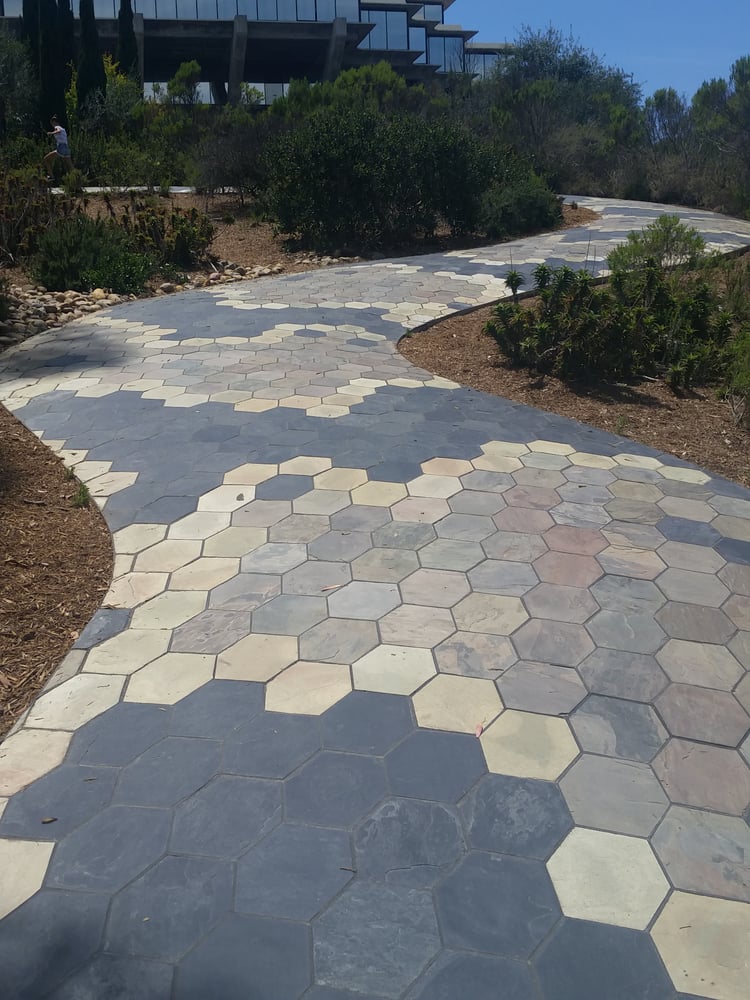
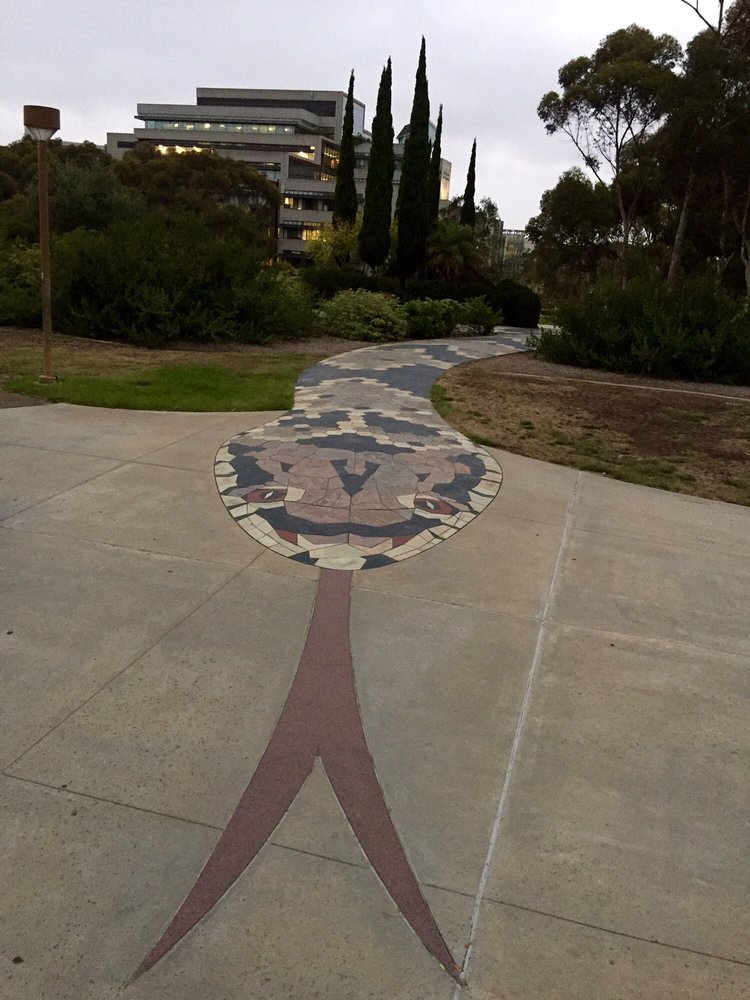
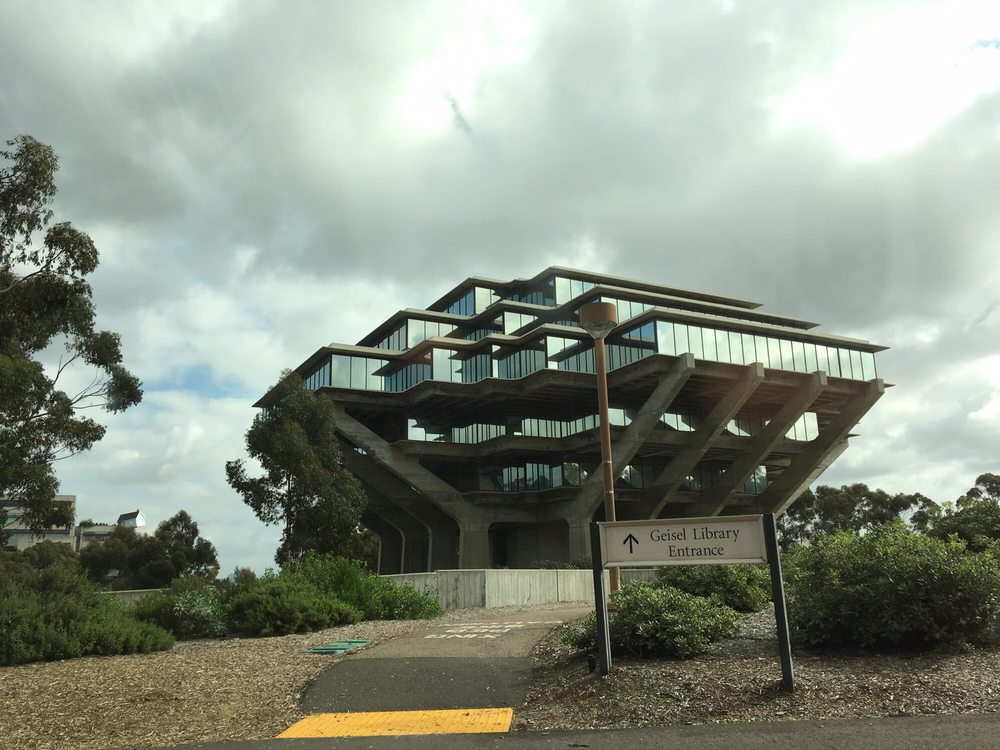
Reversible Destiny Lofts: Mitaka, Tokyo, Japan
If you’ve ever seen the HBO show Girls, you may recognize these photos: Turns out the crazy Japanese apartment Shoshana lived in is, in fact, a real place. Dedicated in memory of Helen Keller, the Reversible Destiny Lofts were built with the goal of helping residents have longer lives through prioritizing an invigorating, stimulating space that makes one more prone to movement than a sedentary lifestyle. These are apartments for grown-ups, as child safety regulations went out the window with dangling electrical outlets, circular rooms, and eye bolts on the ceiling that encourage an abundance of fun, mobile hanging furniture such as hammocks. Designed by Madeline Gins and Shusaku Arakawa in 2005, the nine apartments that make up the Lofts consist of fourteen different bright colors and various rooms of different shapes as a way to keep residents keen and stimulated. Currently, people use the Lofts for everything from residential to educational spaces, and a few of them are available for short-term weekly lease. You can also take an architectural tour of them; which might make a good day trip being that the Lofts sit just outside of Tokyo. When we reached out to those in charge of visiting the lofts, the response we got implied that experiencing the Lofts is essential in order to truly understand them, with the go between saying, “we usually ask the writer to experience the architecture for any article, since the artists/architects Arakawa and Madeline Gins’ concept is to create a space [so] that your body becomes the main figure to expand its great abilities, using a number of senses that we still don’t have names [for].” With that in mind, find out more about how to pay a visit to this innovative space here.
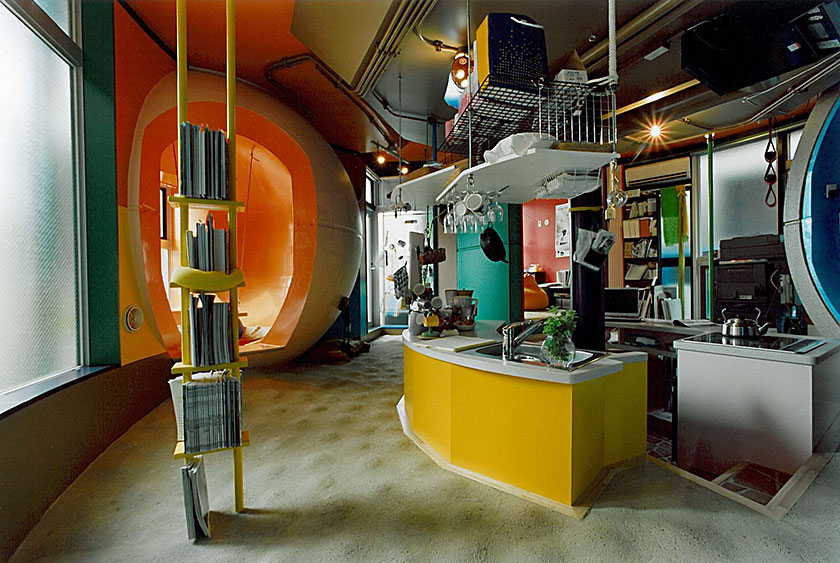
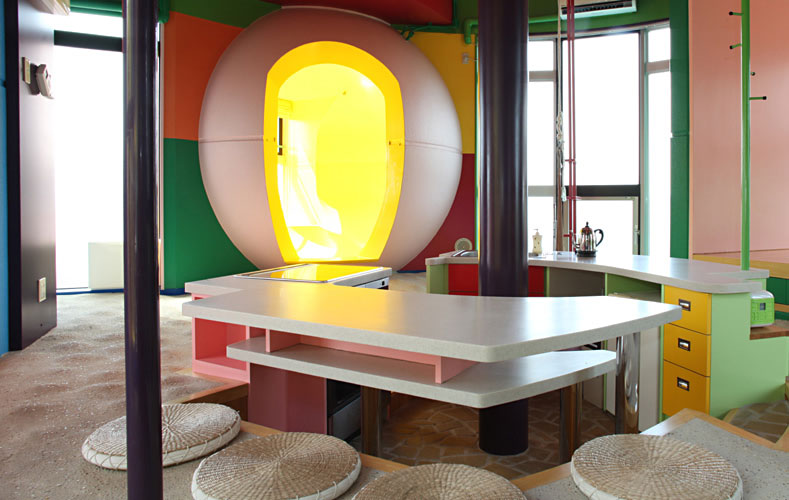
Borobudar Temple: Central Java, Indonesia
Indonesia’s Borobudar Temple is the world’s largest Buddhist temple, dating back to the 9th century. With the help of UNESCO, it was restored in the 1970s. Built in a pyramid style, it overlooks lush green fields surrounding it, emphasizing the Buddhist value of inner peace. The three-tiered structure represents the three spheres the universe is divided into in Buddhist cosmology: the sphere of desires, the sphere of forms (where we still have our forms but are no longer bound by our desires), and the sphere of formlessness (enlightenment). Climbing the mountain to the top tier represents attaining Nirvana. While the temple was in use until sometime between the 10th and 15th centuries (when it was abandoned), it now serves as a Buddhist archaeological site. In addition to taxis and other public transportation, horse carts are a popular way to reach the temple. Plan to spend a few hours at the temple as it’s definitely possible to spend a full afternoon exploring. It feels easy to access and relatively cheap to visit (a day trip is $25 per person).
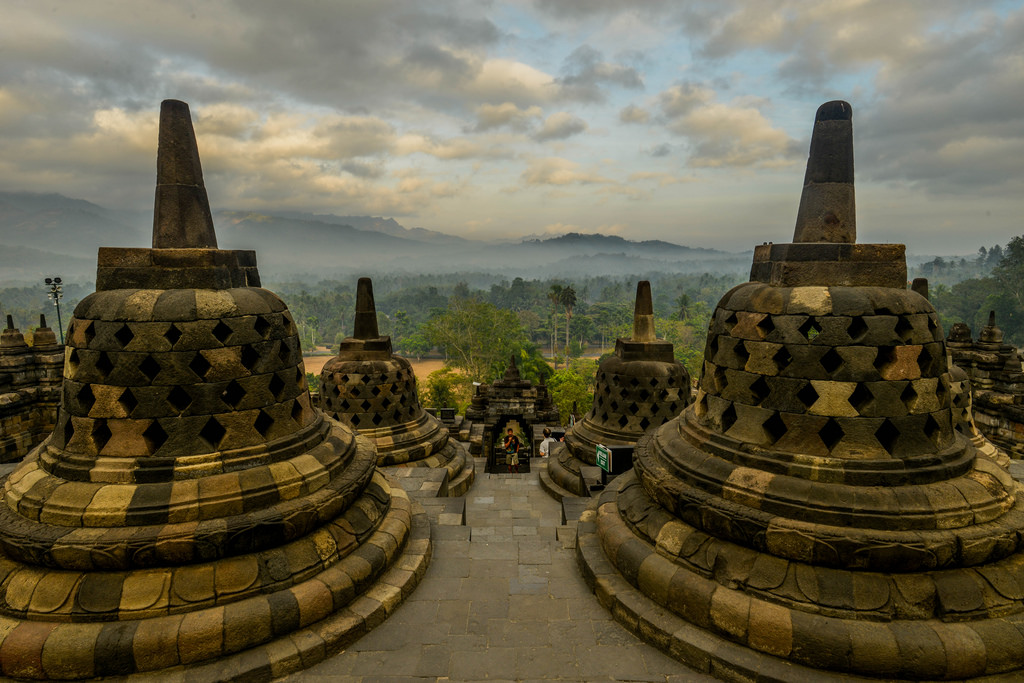
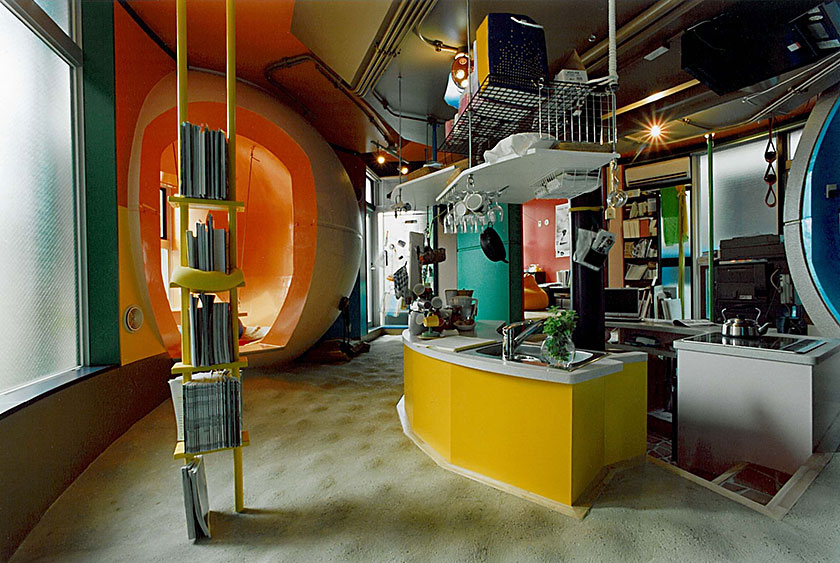
Fusterlandia: Havana, Cuba
Okay, so we cheated a little here: This one isn’t a single building, but still feels compact and cohesive enough to explore as such. Fusterlandia is actually artist José Fuster’s hometown neighborhood. In 1975 after a visit to Gaudi’s public works in Barcelona, Fuster decided to turn the small neighborhood where he grew up into a public art installation. He began with decorating his own studio in mosaics, then asked a few neighbors and businesses if he could decorate their buildings, too. Naturally, they said yes, and the art spread like multicolored ivy from there. Think Cuban style Picasso, with everything from Fuster’s own house to the stop signs in the neighborhood being transformed into art. Before Fuster started decorating everything from his own home to benches, bus stops, and road signs, Jaimanitas (the aforementioned neighborhood in Havana, Cuba) had a rather depressed economy. But since Fuster, it has thrived as an in-the-know artful tourist’s paradise spot. The town is a short few bus stops away from downtown Havana, and while there is no entry fee, Fuster and his fellow neighbors would appreciate you investing in their local handmade art pieces.
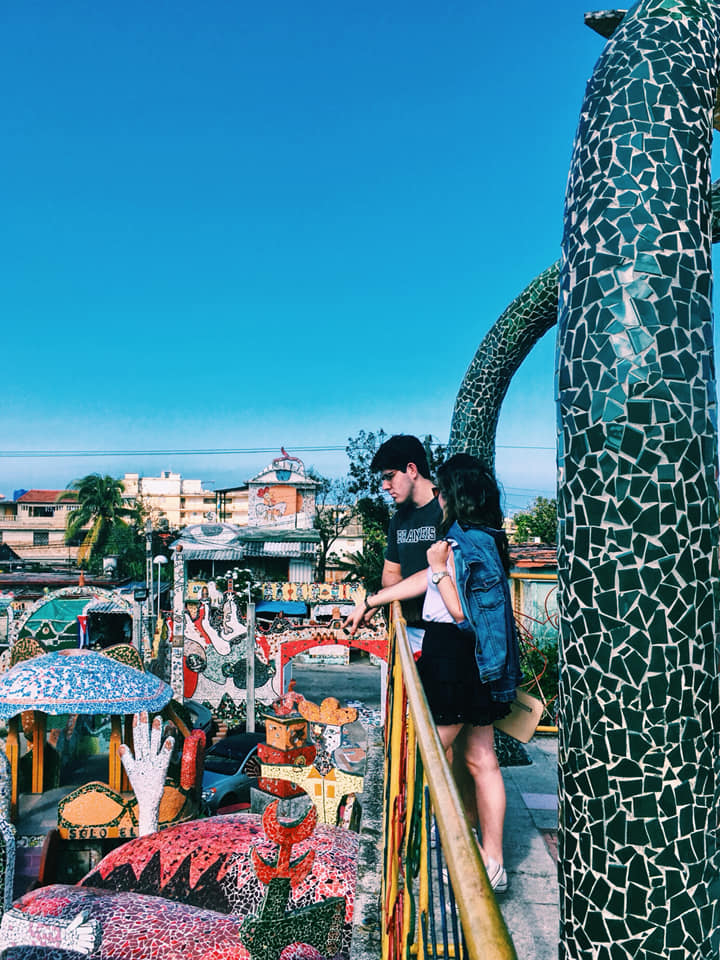
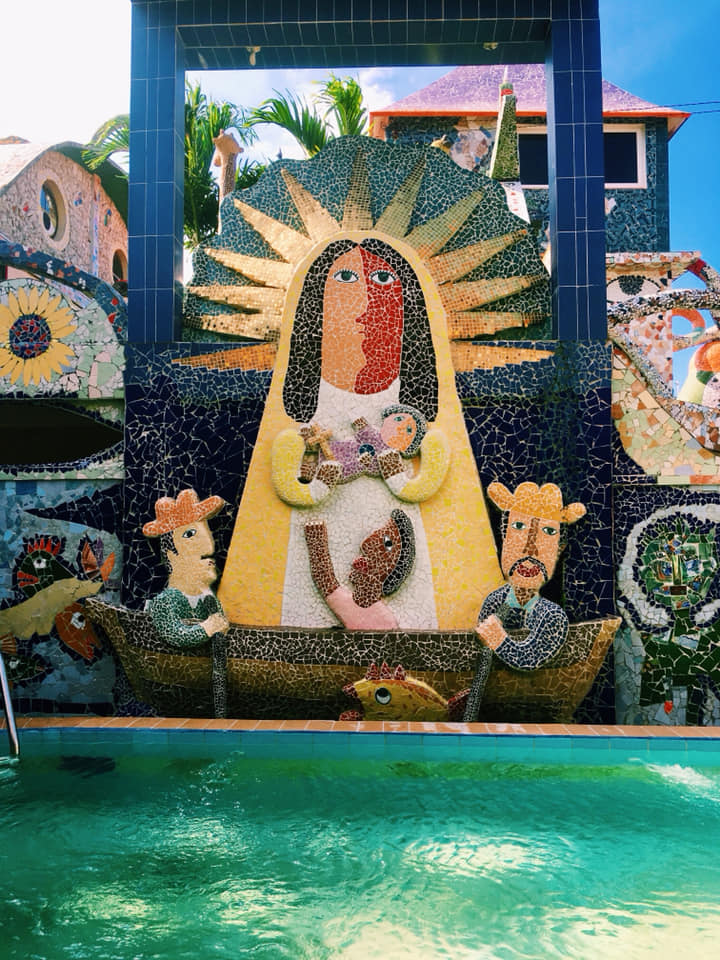
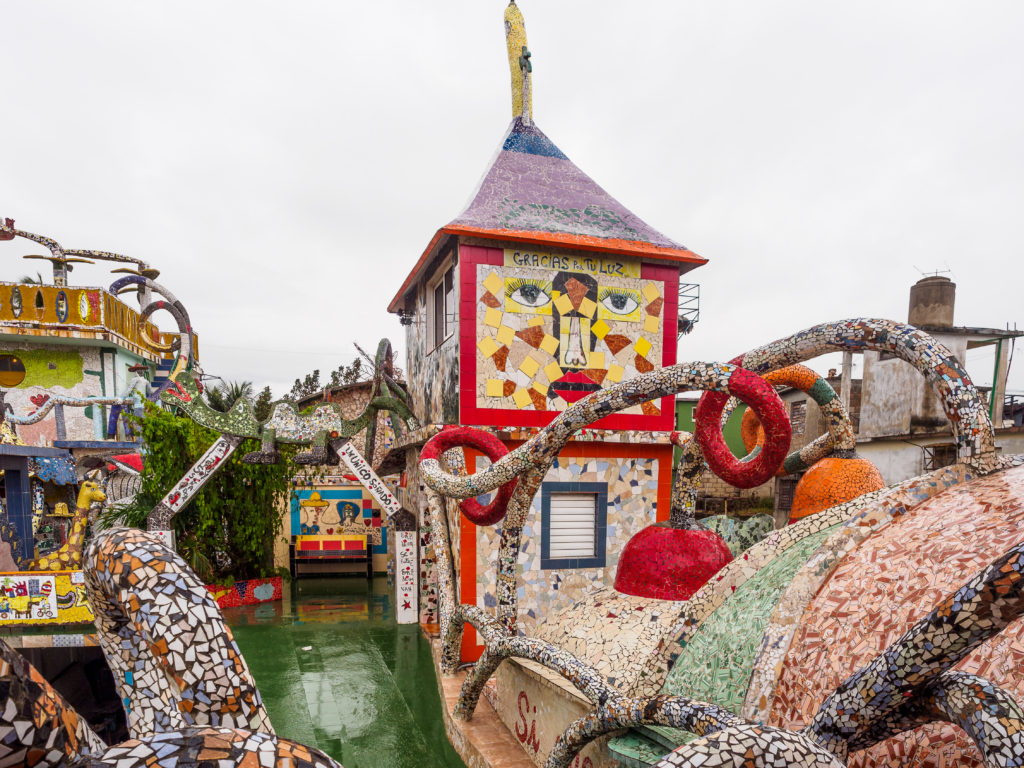
Rumah Miring (Slanted House): Jakarta, Indonesia
The definition of anti-establishment architecture, this slanted house in a gated community full of celebrities is meant to mock the cookie cutter status quo. While the rest of the neighborhood contains columns and very stable looking European style homes, this abode laughs at supposed stability and class using glass and a slanted or “unstable” silhouette. It’s also notably smaller than the others surrounding it, sitting on only an 8 x 20 meter plot of land. Its exterior becomes ironic, with a chic minimalist design, garden, and swimming pool just inside. Built by Budi Pradono Architects in 2015, the slanted roof makes a bold statement, towering above the rest of the neighborhood’s more traditional homes.
